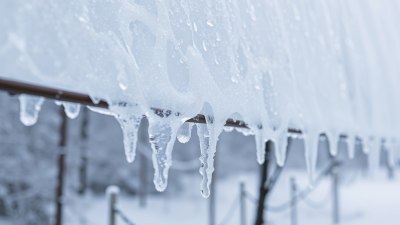How Local Climate Influences How We Show Love
Explore how different climates shape cultural expressions of love, affection, and relationships around the world.

Image created with Flux Schnell
Love is a universal human experience, but the ways in which people express affection and form relationships are deeply influenced by local climates. From the sweltering heat of tropical regions to the cold crisp air of polar zones, climate shapes social behaviors, communication styles, and even the rituals surrounding love and courtship. Understanding this connection enriches our appreciation of diverse cultural practices and highlights the subtle interplay between environment and human emotion.
Climate and Social Interaction Patterns
The physical environment directly influences the amount of time people spend outdoors, which in turn affects social interaction. In warmer climates such as the Mediterranean or parts of South America, people tend to socialize outside more often, fostering casual physical contact and open displays of affection. Public spaces become lively venues for socialization, and greetings often include hugs, kisses, or close proximity, reinforcing bonds of love within communities.
Conversely, in colder climates, people spend more time indoors where personal space may be more limited but interactions tend to be more intimate and prolonged. This often translates into close-knit family units and a more reserved style of expressing affection. Touches and verbal expressions become more meaningful when physical closeness outside is limited by harsh weather conditions.
Tangible Expressions of Love Adapted to Climate
In cold environments, warmth itself becomes a metaphor for love. For example, in Scandinavia and Russia, gift-giving often includes warm clothing or cozy household items which symbolize care and protection. The act of sharing a warm meal or huddling by a fire creates an intimate environment where relationships are nurtured. Physical touch, such as cuddling or holding hands beneath heavy coats, serves as both practical warmth and emotional comfort.
By contrast, in tropical and temperate regions, physical touch is more frequently associated with playful and spontaneous affection due to the generally comfortable temperatures. In many Mediterranean cultures, for example, kisses on the cheek and embracing friends and family are common and unrestricted by clothing bulk. The warmth of the climate seems to translate into warmth in physical expressions of love.
Communication Styles Influenced by Weather
Local climate also influences communication patterns within relationships. Hotter climates often correlate with more expressive, passionate, and animated communication styles. This is visible in the vibrant, emotive way love stories, poetry, and romantic traditions are performed in these regions. The intensity of the weather appears to resonate with the intensity of human emotions, resulting in open demonstrations of love through words and gestures.
Meanwhile, in colder or more temperate regions, communication tends to be more subdued, indirect, or reserved. Expressions of love might take the form of small, thoughtful gestures or a calm, steady presence rather than flamboyant displays. The more subdued weather conditions seem to cultivate a more reflective and measured way of sharing feelings.
Courtship Rituals Tailored by Environment
Many traditional courtship rituals have evolved in direct response to the local climate. For instance, in desert regions where daytime heat is extreme, celebrations and romantic interactions often take place in the evening or nighttime, when temperatures fall. Star-lit dances, night walks, and communal meals after sunset create a backdrop for courtship that's attuned to environmental constraints.
In contrast, in colder regions, courtship may rely on indoor gatherings, storytelling, and music around a hearth. These intimate settings encourage deep conversation and bonding in a protected atmosphere. Climate-driven timing also influences seasonal festivals linked to fertility and love, reflecting agricultural cycles and weather patterns fundamental to survival.
The Role of Clothing and Physical Appearance
Climate dictates attire, which in turn affects how love is visually communicated. In hot climates, lightweight and often minimal clothing allows for more visible physical cues like skin contact, eye contact, and body language, enhancing nonverbal communication in romantic contexts. Jewelry, body paint, and tattoos may complement the appearance, serving as symbolic expressions of affection, status, or commitment that are emphasized when less fabric is worn.
In colder areas, bulky clothing can conceal physical cues, so couples may rely more on vocal tone, eye contact, and the limited touch available between layers of clothing. Accessories such as scarves, hats, and gloves sometimes become tokens of affection themselves— gifting a hand-knitted scarf or warm gloves conveys a caring sentiment.
Seasonality and Its Emotional Impact
Seasonal variations caused by local climate also influence romantic behaviors and relationship dynamics. In regions with marked seasons, the longer nights of winter can foster introspection, desire for closeness, and the development of deeper emotional bonds. Holidays during these times often emphasize family and romantic relationships, creating windows for expressing love.
By contrast, in equatorial zones with minimal seasonal change, the rhythm of social life and courtship is more stable year-round. Love expressions may ebb and flow with other cultural or social calendars rather than be dictated by seasonal weather changes. Constant warmth supports continuous outdoor interaction, keeping social bonds and romantic engagement consistently active.
The Intersection of Climate and Cultural Traditions
It is essential to acknowledge that climate does not work in isolation but interacts with history, religion, and ethnicity to shape expressions of love. For example, Polynesian cultures in tropical climates are known for warm physical affection and elaborate ceremonies celebrating love, both shaped by their environment and seafaring heritage. Meanwhile, Native Arctic peoples develop complementary practices emphasizing communal survival and support, embedded within their cold and harsh conditions.
Different societies interpret environmental challenges through cultural narratives, which are then reflected in their love languages and relationship customs. Thus, climate serves as a backdrop, molding but not determining, the diverse ways love is realized worldwide.
Modern Impacts and Changing Relationships
Urbanization, globalization, and climate change are altering traditional connections between local climate and love expressions. In many cities, climate-controlled environments reduce the direct influence of weather on social behavior. However, cultural memories and established customs persist, continuing to shape interpersonal dynamics and romantic rituals.
Moreover, climate anxiety and environmental concerns can influence emotional intimacy. Shared worries about weather extremes and natural disasters may bring couples closer together or cause strain depending on coping mechanisms. Modern technology provides new ways to express love that transcend climate limitations, yet the foundational role of environment remains significant at a psychological and cultural level.
Travel, Migration, and Cross-Cultural Exchanges
The movement of people across different climates leads to the blending and adaptation of love expressions. Migrants often merge customs from their native climate with those of new environments, creating hybrid forms of romance and affection. For instance, someone from a warm climate settling in a colder region might maintain expressive physical touch but also adopt indoor-focused intimate activities common locally.
Travel also exposes people to new love languages influenced by climate, such as witnessing the vibrant, tactile warmth of tropical cultures or the calm intimacy found in northern communities. These exchanges enrich global understanding of how environment shapes human connection.
Psychological and Biological Dimensions
Beyond cultural factors, local climate can affect biological rhythms and emotions tied to love. Changes in sunlight exposure influence mood-regulating hormones like serotonin and melatonin, affecting feelings of happiness, openness, and desire. Seasonal Affective Disorder (SAD), prevalent in high-latitude regions, can impact social motivation and romantic engagement during darker months.
Temperature also modulates physical comfort and hormones related to attraction and bonding, such as oxytocin. These biological elements interplay with social conventions, making climate an indirect but powerful determinant in the ways love is experienced and expressed.
Impacts on Family Dynamics and Parenting
Local climate influences family structures and parenting styles, which are foundational to early experiences of love. In agricultural and pastoral societies shaped by specific climates, extended family networks often collaborate in child-rearing, with affection expressed communally. Physical closeness for warmth or protection strengthens bonds among family members.
In urban, climate-controlled environments, nuclear families may have less physical interaction daily but compensate with activities emphasizing quality time and intentional affectionate communication. These adaptations reveal how climate underpins the foundational contexts where love is first nurtured.
Religious and Spiritual Connections to Climate and Love
Many religions incorporate local climate elements into rituals symbolizing love and union. For example, in Hindu ceremonies, water and fire are sacred elements tied to life and love, relevant in varied climatic zones of India. In desert cultures, the scarcity of water generates prayers and vows invoking divine protection for loved ones.
Seasonal festivals often celebrate fertility, renewal, and devotion aligned with environmental cycles, mixing spiritual beliefs with climate realities. These rituals reinforce communal love while responding to the practical demands of local weather and landscape.
Art, Music, and Literature Reflecting Climate-Love Interactions
Creative expressions vividly illustrate how climate shapes perceptions and expressions of love. Romantic songs from warm regions may emphasize passion and exuberance, while those from colder climates highlight longing, endurance, and inner warmth. Literature often uses weather metaphors to convey emotional states, reflecting the intimate connection between nature and love.
Visual arts depict loving gestures influenced by clothing and environment—embracing figures wrapped in scarves in northern paintings versus open-armed dancers in tropical murals. These artistic variations offer compelling insights into the climate-love nexus.
Challenges and Opportunities
While climate influences many aspects of love, it can also create challenges. Harsh environments may limit opportunities for socializing, complicate courtship rituals, or impose stress on relationships due to environmental hardships. In contrast, stable and hospitable climates may facilitate freer emotional expression but also bring complexities tied to social expectations.
Recognizing the impact of local climate enables relationship counselors, educators, and social planners to develop culturally sensitive approaches that honor environmental influences. It also opens avenues for cross-cultural empathy and learning in our increasingly interconnected world.
Overall, local climate is a powerful yet often overlooked force shaping how humans express love. From physical touch and courtship ceremonies to communication and family life, the environment colors the cultural palette from which love unfurls, highlighting the adaptability and creativity of human connection across diverse settings.











